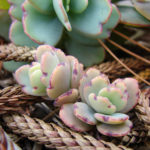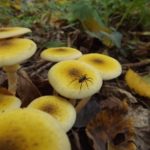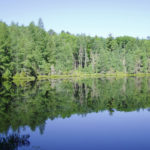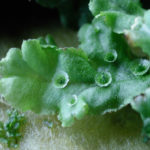In the presence of abundant water and sunlight, most plants conduct photosynthesis using what is known as the C3 pathway. Some plants can conduct C4 photosynthesis in water-limited conditions; a different enzyme collects carbon dioxide from the air to form a 4-carbon chain that lends itself to the pathway name. In water-poor conditions, some plants collect and process carbon at night rather than during the day through crassulacean acid metabolism (CAM) photosynthesis, named for its discovery in succulents. In the December 1, 2017 issue of Nature Communications, a team led by Oak Ridge National Laboratory researchers and including scientists at the Joint Genome Institute sequenced and analyzed the genome of Kalanchoë fedtschenkoi to better understand how this plant transitioned from C3 to CAM photosynthesis. Read more on the JGI website.
JGI Comparative Genomics of Humongous Fungus Helps Explain Size, Pathogenicity
As part of an international team, researchers at the Joint Genome Institute (JGI) helped sequence and analyze the genomes of four fungi of the genus Armillaria. Often called the humongous fungus, Armillaria form some of the planet’s largest living organisms. They are also among the most devastating fungal pathogens, capable of breaking down all of the components of a host plant’s cell walls.
Congratulations to Biosciences Area Director’s Award Recipients
Several Biosciences Area personnel are among the 2017 Berkeley Lab Director’s Awards honorees. This annual program recognizes outstanding contributions by employees to all facets of Lab activities. A ceremony honoring all of the 2017 recipients will be held on November 30 in the Building 50 Auditorium.
JGI Helps Track the Viral Parasites of Giant Viruses over Time
Using metagenome data sets collected over several years in northern freshwater lakes, a team led by researchers at Ohio State University and the Joint Genome Institute (JGI) uncovered 25 novel sequences of virophages, parasites that live in giant viruses and use their machinery to replicate and spread. Virophages can alter the way viruses interact with other microbes, such as algae and cyanobacteria, which regulate the flow of carbon in freshwater lakes and help determine whether the bodies of water serve as sinks or sources for carbon. The identification of these novel sequences, reported in the October 11 issue of Nature Communications, doubles the number of virophages known since their discovery a decade ago. Read more on the JGI website..
JGI Analysis of Liverwort Genome Offers Insights into Land Plant Evolution
As part of an international team led by researchers at Monash University in Australia, and at Kyoto and Kindai Universities in Japan, scientists at the Joint Genome Institute (JGI) analyzed the genome sequence of the common liverwort (Marchantia polymorpha), a living link in the transition from algae to the multitude of modern land plants. The team identified genes and gene families crucial to plant evolution which have been conserved across plant lineages. The results were reported in the October 5 issue of Cell. Read more on the JGI website..
- « Previous Page
- 1
- …
- 33
- 34
- 35
- 36
- 37
- …
- 46
- Next Page »
Was this page useful?








